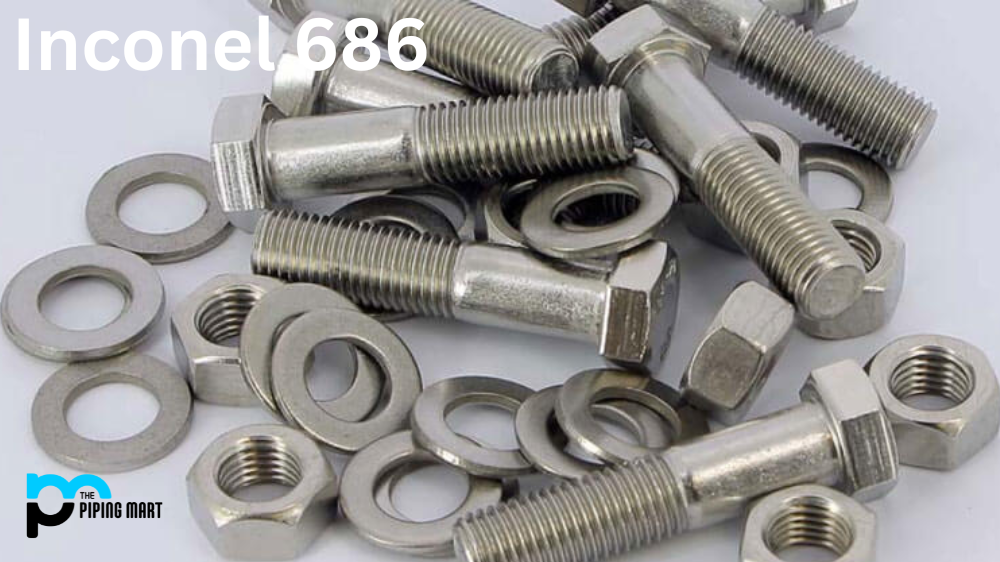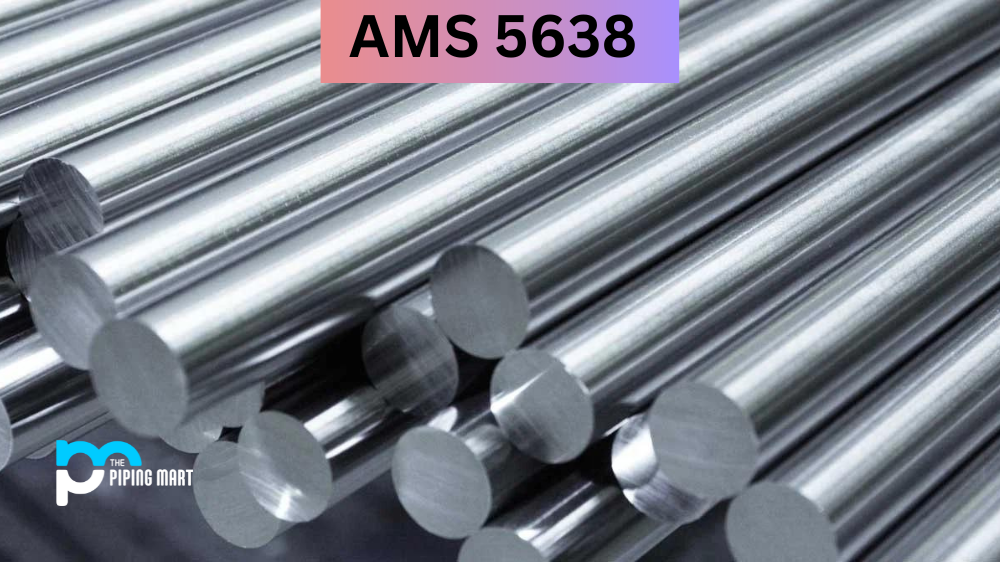If you are in the manufacturing or chemical industries, you may have heard about Inconel 686. This nickel-chromium-molybdenum alloy is one of the most robust and corrosion-resistant materials available. It is highly valued for its exceptional performance in extreme environments, such as chemical processing, oil and gas extraction, and aerospace applications. In this article, we will examine what Inconel 686 is, its composition, mechanical and physical properties, uses corrosion resistance, heat treatment, and machining.
What is Inconel 686?
Inconel 686 is a Ni-Cr-Mo alloy of superalloys that offers excellent corrosion resistance, high-temperature strengths and outstanding toughness. It has superior thermal fatigue strength and can be used for components subject to cyclic heating and cooling in harsh environments.
Inconel 686 Composition
Inconel 686 is a nickel-based superalloy that contains chromium, molybdenum, tungsten, and iron as additional elements. Its chemical composition resists various corrosive media, including acids, salts, and seawater. In addition, Inconel 686 offers excellent high-temperature strength, toughness, and durability. The alloy is heat-treatable and can be hardened through controlled heating and cooling.
| Element | Content (%) |
|---|---|
| Nickel, Ni | 59 |
| Chromium, Cr | 19-23 |
| Molybdenum, Mo | 15-17 |
| Iron, Fe | ≤ 5 |
| Tungsten, W | 3.0-4.40 |
| Manganese, Mn | ≤ 0.75 |
| Phosphorous, P | ≤ 0.040 |
| Sulfur, S | ≤ 0.020 |
| Titanium, Ti | 0.020-0.25 |
| Carbon, C | ≤ 0.010 |
Inconel 686 Mechanical Properties
Regarding mechanical properties, Inconel 686 has a tensile strength of 100-130 ksi and a yield strength of 55-75 ksi. It also offers excellent fatigue resistance, impact strength, and creep resistance. Moreover, it maintains its performance in high-temperature and high-pressure environments, making it a preferred material for oil and gas extraction and processing.
| Properties | Metric | Imperial |
|---|---|---|
| Tensile strength | 721.9 MPa | 104700 psi |
| Yield strength (@strain 0.200%) | 364 MPa | 52800 psi |
| Elastic modulus | 207 GPa | 30000 ksi |
| Shear modulus | 77 GPa | 11200 ksi |
| Poisson’s ratio | 0.34 | 0.34 |
| Elongation at break | 71% | 71% |
Inconel 686 Physical Properties
Inconel 686 also has exceptional physical properties. Its density is around 8.6 g/cm3, and its melting point is 1330-1380°C. Its thermal expansion coefficient is 13.5 µm/m°C, which expands and contracts less with temperature changes than other materials. Additionally, Inconel 686 has high electrical and thermal conductivity, making it suitable for electrical and electronic applications.
| Properties | Metric | Imperial |
|---|---|---|
| Density | 8.72 g/cm³ | 0.315 lb/in³ |
| Melting point | 1338-1380 °C | 2440-2520 °F |
Inconel 686 Equivalents
- UNS N06686
- W.Nr. 2.4606
- Ni-Cr-Mo-W
- NiCr21Mo16W
Inconel 686 Specifications
- ASTM B574
- ASTM B575
- ASTM B619
- ISO 15156-3 (NACE MR0175)
Inconel 686 Uses
The unique properties of Inconel 686 make it a highly versatile material in numerous fields. Due to its resistance to highly corrosive chemicals, it is used in chemical processing, such as in reactors, vessels, and pipelines. It is also used in the aerospace industry for engine components, afterburner parts, and heat exchangers. In addition, the alloy is used in the marine industry for seawater intake valves, pump casings, and propeller shafts.
Corrosion Resistance
Inconel 686 is highly resistant to corrosion caused by various environments. It has excellent resistance to pitting, stress corrosion cracking, and intergranular corrosion. Corrosion resistance is enhanced through additions of tungsten and molybdenum, which promote the formation of a stable and passive oxide layer on the surface of the alloy.
Heat Treatment
Inconel 686 requires heat treatment to develop its optimal properties. Heat treatment involves heating the material to high temperatures, holding it at the temperature for a specific duration, and then cooling it in a controlled manner. The process enables the alloy’s microstructure to be modified, enhancing its strength, toughness, and other properties. The heat treatment is critical to achieving the desired properties based on the intended application.
Machining
Lastly, Inconel 686 is ideal for machining due to its excellent formability and ductility. The alloy can be machined using standard techniques, including milling, drilling, turning, and grinding. However, special cutting tools and methods may be necessary due to their high strength and toughness.
Welding
Welding of Inconel 686 may require some precautionary measures to prevent cracking and ensure optimal properties.
Conclusion
Inconel 686 is a high-performance nickel-based alloy with excellent resistance to corrosion, high temperature, and pressure. The alloy is helpful in various applications, including chemical processing, aerospace, and marine industries. Its composition, mechanical and physical properties make it suitable for use in the most demanding environments. With the appropriate heat treatment and machining, Inconel 686 can be customized to meet specific application requirements. Though a bit challenging to weld, expert attention can ensure optimal properties in this alloy. Inconel 686 remains one of the most sought-after materials for its unique properties, performance, and reliability.

Abhishek is a seasoned blogger and industry expert, sharing his insights and knowledge on various topics. With his research, Abhishek offers valuable insights and tips for professionals and enthusiasts. Follow him for expert advice on the latest trends and developments in the metal industry.




